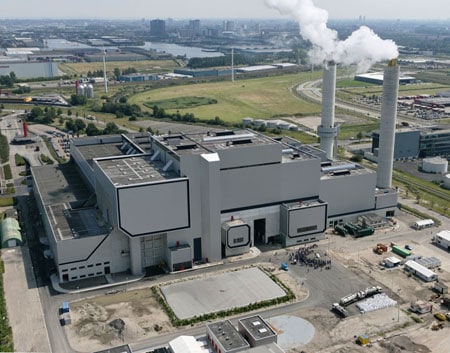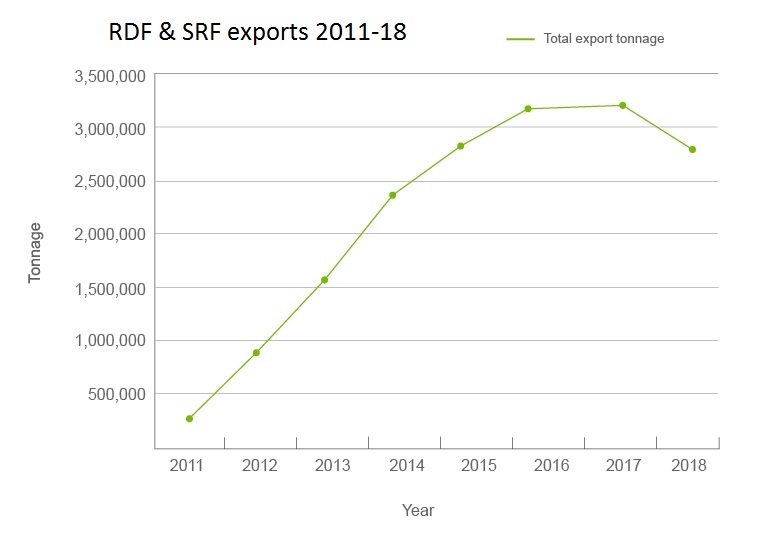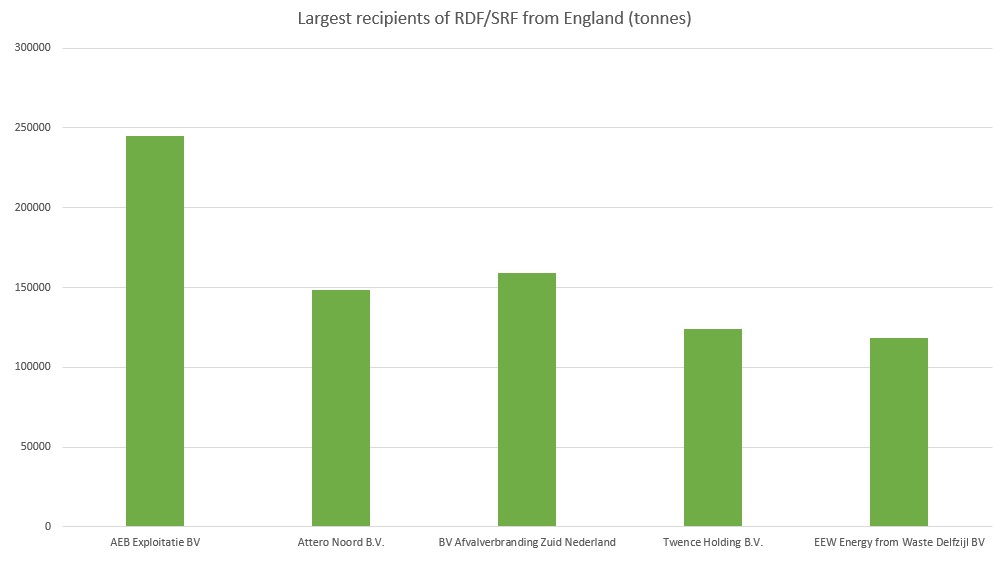Exports of waste derived fuels – RDF and SRF – from England to energy from waste facilities overseas appear to have fallen during 2018, provisional figures published last week suggest.
Analysis of the data on international waste shipments released by the Environment Agency for the 12 months to the end of 2018, suggests that as much as 300,000 tonnes less was exported during the year compared to 2017 (see letsrecycle.com story).
In total the figures – which may be subject to change – suggest that 2,898,707 tonnes of RDF and SRF were exported during 2018, compared to 3,200,787 tonnes in 2017.
A drop in exports has somewhat been anticipated by industry experts. It comes after a number of years of strong growth in exports of waste as a fuel, as companies seek to move away from landfilling material – taking advantage of demand for waste feedstock from facilities overseas, particularly in the Netherlands, Germany and Scandinavia.
In more recent years RDF exports from England have been levelling out as more opportunities arise on the domestic market and energy from waste facilities in European countries reach their capacity.
Market
Analysis of the figures suggests that the Netherlands continues to be the largest destination for exported RDF and SRF from England, receiving 1.28 million tonnes during the year. However, this represents a decrease from the 1.54 million tonnes exported in 2017.
Sweden and Germany also remained prominent markets for RDF and SRF, receiving 540,040 tonnes and 495,680 tonnes respectively.
Other prominent destinations for RDF and SRF from England included Norway, Denmark, Latvia, Cyrpus, Poland, Bulgaria, Portugal, Greece, France, Finland, Spain and Belgium.
In terms of facilities receiving the waste – AEB’s 1.4 million tonnes-per-year capacity energy from waste plant in Amsterdam is the largest individual recipient of material, consuming around 245,000 tonnes of waste from England alone.
Exporters

The AEB facility in Amsterdam – which the figures indicate is the largest individual consumer of RDF from England
On an exporter level, the figures suggest that the Norwegian-owned waste fuels specialist Geminor has overtaken Biffa as the largest exporter of fuels, to top the table by exporting 363,366 tonnes of RDF in 2018.
Biffa, which has topped the table for the past four years, exported 350,167 tonnes over the year 2018 – a drop from 460,383 tonnes for 2017. This was followed closely by N&P at 334,154 tonnes.
Other companies to export over 100,000 tonnes during the year were Suez (302,393), Seneca (166,773), FCC (162,870), Veolia (158,206), Berling Enviro (147,492), Andusia (146,620) and Renewi (138,355).
Out of the total 2.9 million tonnes exported, 322,467 of this was reported as solid recovered fuel (SRF). This shows that the rate companies are diversifying into SRF continues to rise – up from 186,191 tonnes in 2017.
The post RDF exports decline in 2018 appeared first on letsrecycle.com.
Source: letsrecycle.com Waste Managment




